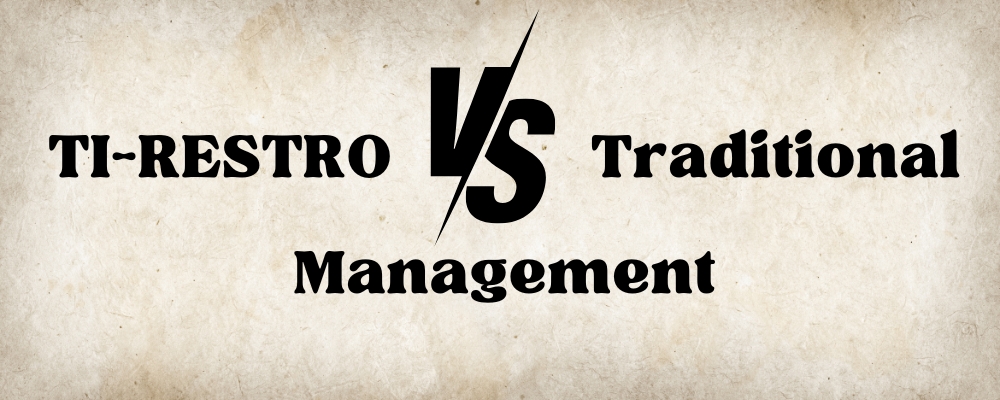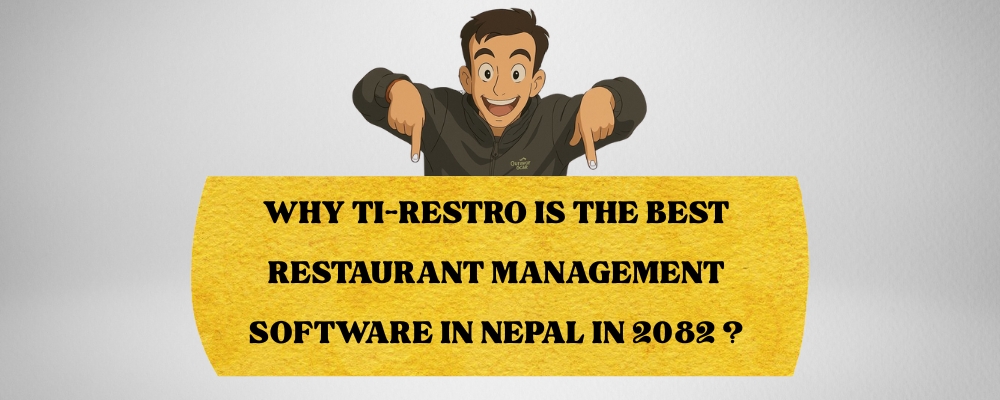In the rapidly evolving restaurant industry, the integration of advanced technologies has become essential for maintaining competitiveness and operational efficiency. One such innovation is TI-RESTRO, a comprehensive restaurant management software designed to streamline various aspects of restaurant operations. This article provides a detailed cost-benefit analysis of implementing TI-RESTRO compared to traditional management practices, highlighting how such software can transform restaurant operations.

Table of Contents
Understanding TI-RESTRO
TI-RESTRO is an all-encompassing restaurant management system that automates and integrates critical functions such as order processing, inventory management, staff scheduling, and customer relationship management. By consolidating these tasks into a single platform, TI-RESTRO aims to enhance efficiency, reduce errors, and improve overall customer satisfaction.
Traditional Management Practices
Traditional restaurant management often relies on manual processes and disparate systems to handle daily operations. This approach includes handwritten orders, manual inventory tracking, paper-based scheduling, and limited data analysis capabilities. While some establishments may use basic digital tools, the lack of integration can lead to inefficiencies and increased operational costs.
Cost Analysis
1.Initial Investment
- Traditional Management: Typically involves minimal upfront costs, primarily for basic office supplies and standalone software applications.
- TI-RESTRO: Requires an initial investment for software acquisition and potential hardware upgrades. According to industry estimates, on-premise systems may necessitate hardware investments ranging from $1,000 to $5,000, with ongoing maintenance fees between $500 and $2,000 annually.
2.Operational Costs
- Traditional Management: Higher labor costs due to manual processes and potential inefficiencies. Increased likelihood of errors leading to waste and customer dissatisfaction.
- TI-RESTRO: Subscription-based pricing models typically range from $50 to $500 per month, depending on the system’s complexity and features. These systems can lead to labor cost reductions and improved resource allocation
3.Maintenance and Support
- Traditional Management: Ongoing costs associated with manual record-keeping, potential for data loss, and limited support structures.
- TI-RESTRO: Includes regular updates, technical support, and data backup services, often encompassed within the subscription fee.
Benefit Analysis
1.Operational Efficiency
- Traditional Management: Prone to human error, time-consuming processes, and challenges in coordinating between front-of-house and back-of-house operations.
- TI-RESTRO: Automates order processing, inventory tracking, and staff scheduling, leading to streamlined operations. A comprehensive study indicated that implementing restaurant management software resulted in a 15% increase in table turnover rates and a 20% improvement in inventory management accuracy.
2.Customer Satisfaction
- Traditional Management: Inconsistent service quality, longer wait times, and limited ability to track customer preferences.
- TI-RESTRO: Enhances the dining experience through faster service, accurate orders, and personalized interactions. The same study reported a 10% increase in customer satisfaction scores post-implementation.
3.Data-Driven Decision Making
- Traditional Management: Limited data collection and analysis capabilities, hindering strategic planning and responsiveness to market trends.
- TI-RESTRO: Offers real-time analytics on sales patterns, inventory levels, and employee performance, facilitating informed decision-making. This data-driven approach can lead to optimized menus, targeted marketing campaigns, and improved financial management.
4.Inventory Management
- Traditional Management: Manual tracking can result in overstocking or shortages, leading to increased costs and potential menu item unavailability.
- TI-RESTRO: Provides real-time inventory tracking, reducing waste and ensuring essential items are always in stock. This precision contributes to cost savings and consistent menu offerings
5.Staff Management
- Traditional Management: Scheduling conflicts, inefficient shift planning, and challenges in tracking labor costs.
- TI-RESTRO: Automates scheduling, monitors labor costs, and enhances communication among staff. This leads to better workforce management and increased employee satisfaction.
Case Studies
1.The Bistro Café
- Background: A mid-sized casual dining restaurant facing long wait times and frequent order errors.
- Solution: Implemented a comprehensive restaurant software package.
- Results: Achieved a 20% reduction in wait times, a 15% decrease in order errors, and a 12% increase in customer satisfaction scores.
2.La Bella Italia
- Background: A family-owned Italian restaurant struggling with inefficient reservations and inventory mismanagement.
- Solution: Adopted a restaurant management software with integrated reservation and inventory modules.
- Results: Experienced an 18% increase in table turnover rate, a 25% reduction in inventory costs, and an 8% improvement in customer satisfaction.
3.The Green Garden
- Background: A popular vegetarian restaurant dealing with high food waste and inventory tracking issues.
- Solution: Implemented software with robust inventory management and waste tracking features.
- Results: Improved inventory accuracy by 22%, reduced food waste by 30%, and increased customer satisfaction scores by 10%.
We hope this blog was helpful. For more industry-related updates tips and guides follow us on Facebook , Instagram, Linkedin





